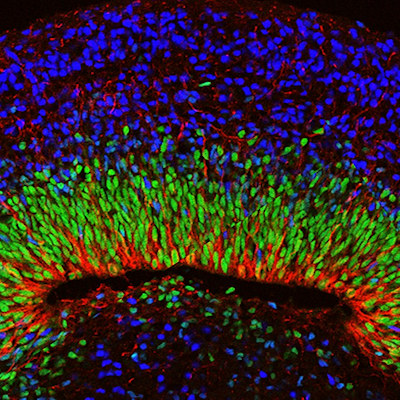October 7, 2022 -- Sesame seed-sized organoids grown from human cells are providing new insights into the brain. In a study published on October 6 in the journal Nature Communications, University of Utah (U of U) Health researchers outlined the organoids' creation and potential for understanding neural diseases including autism.
Although not quite "mini brains," organoids provide a glimpse into the living brain, which is otherwise difficult to access, and can be tested experimentally in ways that a brain cannot. However, previous lab-grown organoids did not develop in reproduceable ways.
Seeking an improved model, the researchers prompted human stem cells to become neuroepithelial cells, which then formed self-organized structures called neural rosettes. These coalesced into spheres, increasing in size and complexity at a rate similar to a fetus's developing brain. After five months, they contained various cell types found in the cerebral cortex, the brain layer involved in language and reasoning.
The researchers then investigated the effects of an autism-associated genetic abnormality. They found that organoids engineered to have lower levels of the gene Shank3 appeared normal, but some neurons did not efficiently pass along signals to other neurons. Other neurons were hyperactive, firing more often in response to stimuli. Finally, molecular pathways that promote cell adhesion were disrupted.
Their findings shed light on autism's cellular causes and provide a better understanding of brain development and what goes awry during disease. One goal is to use brain organoids to test drugs that might treat disorders.
"These organoids had patterns of electrophysiological activity that resembled actual activity in the brain. I didn't expect that," co-author Jan Kubanek, PhD, U of U assistant professor, said in a statement. "This new approach models most major cell types, and in functionally meaningful ways."
Copyright © 2022 scienceboard.net








